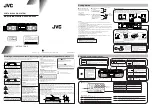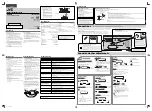
D15362.16 DX70 and DX80 Administrator Guide CE9.13, JUNE 2020.
www.cisco.com — Copyright © 2020 Cisco Systems, Inc. All rights reserved.
82
Cisco Webex DX70 and DX80
Administrator Guide
Provisioning of product specific configurations from CUCM
This chapter describes how to provision settings or parameters to
a device (endpoint) using the method that was introduced in Cisco
UCM Release 12.5(1)SU1.
Prior to Cisco UCM release 12.5(1)SU1, only a limited set of
product-specific configurations were pushed from UCM to the
device. The administrator had to rely on Cisco TMS or the web
interface of the device to configure all the other settings.
From CUCM release 12.5(1)SU1 more settings or parameters
can be provisioned from CUCM. The list of settings matches
what users see on their device (public xConfigurations), with the
exception of Network, Provisioning, SIP and H.323 settings.
For more information about CUCM refer to the
Video Endpoints
Management
chapter of the
Feature Configuration Guide for
Cisco Unified Communications Manager, Release 12.5(1)SU1
.
Configuration control modes
Based on the deployment needs, administrators can configure
various configuration control modes in the CUCM administration
interface. You can decide whether you want to control the
configuration settings from CUCM, the device, or both of them
together.
These are the various configuration control modes:
•
Unified CM and Endpoint
(default): Use this mode if you
want the CUCM and the device to operate as the multi-
master source for provisioning device data. CUCM reads the
xConfiguration data automatically from the device, and any
updates made locally on the device is synchronised with the
CUCM server instantly.
•
Unified CM:
CUCM operates as the centralized master source
for provisioning device data. CUCM ignores any changes
that are done locally on the device, and therefore such
changes will be overridden the next time CUCM applies a new
configuration to the device.
•
Endpoint:
The endpoint operates as the centralized master
source of configuration data. In this mode, the endpoint
ignores any configuration data from the CUCM and doesn’t
synchronize back the changes done locally.
This mode is typically used when an integrator is installing the
devices and wants to control the configuration locally from the
device.
Pull configurations from the device on-demand
Administrators can use the
Pull xConfig. from Device
option in
CUCM to pull configuration changes from the devices on-demand
at any time.
This option is enabled only if the device is registered.
Supported CE software
versions
Any device that supports CE9.8 or higher
can use this new provisioning layout in
CUCM.
If the device has a software version prior
to CE9.8, you will be able to view the
complete set of parameters in the CUCM
user interface; but you can only configure
the subset that is marked with a “#”.
The “#” is to the right of each parameter
value.
The full set of parameters functions only
if you upgrade the device to CE9.8 or
higher.
(page 1 of 2)
Introduction
Configuration
Peripherals
Maintenance
Device settings
Appendices
Configuration
















































